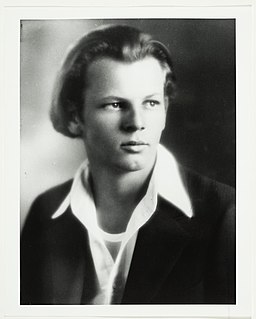
Paul Jackson Pollock was an American painter and a major figure in the abstract expressionist movement.
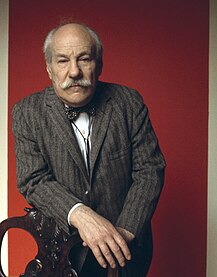
Barnett Newman was an American artist. He is seen as one of the major figures in abstract expressionism and one of the foremost of the color field painters. His paintings are existential in tone and content, explicitly composed with the intention of communicating a sense of locality, presence, and contingency.

Wifredo Óscar de la Concepción Lam y Castilla, better known as Wifredo Lam, was a Cuban artist who sought to portray and revive the enduring Afro-Cuban spirit and culture. Inspired by and in contact with some of the most renowned artists of the 20th century, including Pablo Picasso, Henri Matisse, Frida Kahlo and Diego Rivera, Lam melded his influences and created a unique style, which was ultimately characterized by the prominence of hybrid figures. This distinctive visual style of his also influences many artists. Though he was predominantly a painter, he also worked with sculpture, ceramics and printmaking in his later life.

Fairfield Porter was an American painter and art critic. He was the fourth of five children of James Porter, an architect, and Ruth Furness Porter, a poet from a literary family. He was the brother of photographer Eliot Porter and the brother-in-law of federal Reclamation Commissioner Michael W. Straus.
Gordon Onslow Ford was one of the last surviving members of the 1930s Paris surrealist group surrounding André Breton.

Raymond Georges Yves Tanguy, known as just Yves Tanguy, was a French surrealist painter.
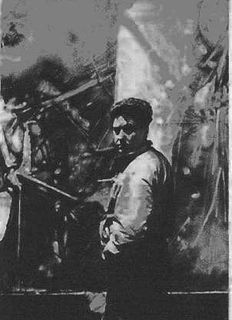
Roberto Sebastián Antonio Matta Echaurren, better known as Roberto Matta, was one of Chile's best-known painters and a seminal figure in 20th century abstract expressionist and surrealist art.
Lowery Stokes Sims is an American art historian and curator of modern and contemporary art known for her expertise in the work of African, African American, Latinx, Native and Asian American artists such as Wifredo Lam, Fritz Scholder, Romare Bearden, Joyce J. Scott and others. She served on the curatorial staff of the Metropolitan Museum of Art, the Studio Museum in Harlem, and the Museum of Arts and Design. She has frequently served as a guest curator, lectured internationally and published extensively, and has received numerous public appointments. Sims was featured in the 2010 documentary film !Women Art Revolution.
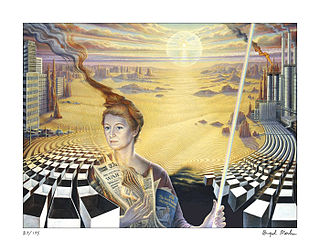
Brigid Marlin is an American artist based in Hertfordshire, UK. She studied in Dublin, Montreal, New York, Paris and Vienna where, under the guidance of the Austrian artist Ernst Fuchs, she learned the oil and egg tempera technique (Mischtechnik) of the Flemish and Italian Renaissance painters Jan van Eyck and Giovanni Bellini. In 1961 she founded the ins-cape group, which subsequently became the Society for Art of Imagination.

Helen Lundeberg (1908–1999) was a Southern Californian painter. Along with her husband Lorser Feitelson, she is credited with establishing the Post-Surrealist movement. Her artistic style changed over the course of her career, and has been described variously as Post-Surrealism, Hard-edge painting and Subjective Classicism.

The National Museum of Fine Arts of Havana in Havana, Cuba is a museum of Fine Arts that exhibits Cuban art collections from the colonial times up to contemporary generations.
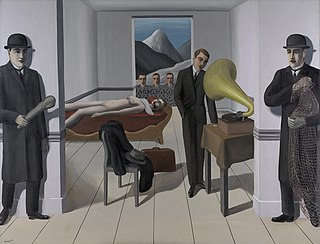
The Menaced Assassin is a 1927 oil on canvas painting by Belgian surrealist artist René Magritte.
Pierre Matisse was a French-American art dealer active in New York City. He was the youngest child of French painter Henri Matisse.
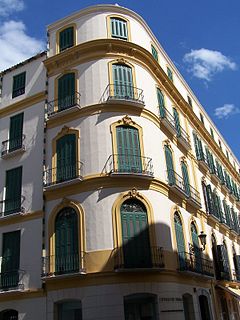
The Fundación Picasso, also known as the Pablo Ruiz Picasso Foundation, is a foundation based in Málaga, Andalusia, Spain with the objective of promoting and promulgating the work of the artist Pablo Picasso. They are headquartered in the home on the Plaza de la Merced that was his birthplace, now the Museo Casa Natal, one of the world's many Picasso museums.

Michele Cascella was an Italian artist. Primarily known for his oil paintings and watercolours, he also worked in ceramics, lithography, and textiles. He exhibited regularly at the Venice Biennale from 1924 until 1942, and his works are owned by major museums in Italy and Europe, including Victoria and Albert Museum in London, Galerie nationale du Jeu de Paume in Paris, and Galleria Nazionale d'Arte Moderna in Rome.
William Stanley Rubin was an American art scholar. a distinguished curator, critic, collector, art historian and teacher of modern art.
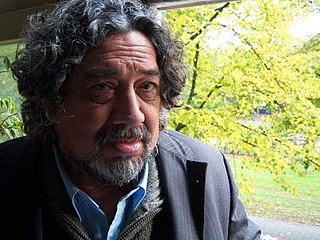
Freddy Flores Knistoff is a painter and writer born in Viña del Mar, Chile in 1948. He has lived in Amsterdam since 1985.

Oswaldo Vigas was a Venezuelan artist, best known as a painter and muralist. His work includes painting, sculpture, prints, drawings, ceramics and tapestries. His artwork was created between France and Venezuela, and it's an original synthesis of the cultural roots of Latin America and the latest artistic currents of modernity. He has had over one hundred solo exhibitions and is represented in numerous public institutions and private collections around the world. He is predominantly recognized as a self-taught artist and painter.
Betti-Sue Hertz is an American art curator and art historian and director of the Wallach Art Gallery at Columbia University.
The False Mirror (1928) is a surrealist oil painting by René Magritte that depicts a human eye framing a cloudy, blue sky. In the depiction of the eye in the painting, the clouds take the place normally occupied by the iris. The painting's original French title is Le faux miroir.














